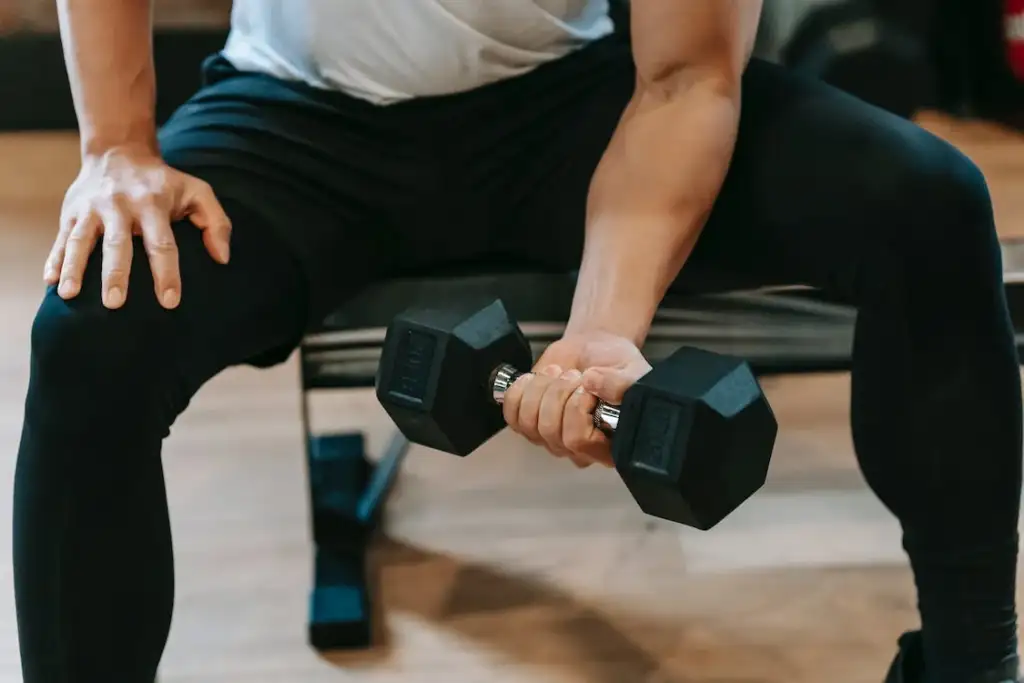Tracking your fitness progress is essential for achieving your health and wellness goals.
It helps you stay motivated, make informed adjustments to your routine, and celebrate your achievements along the way.
This comprehensive guide will delve into the top 10 ways to track your fitness progress and provide detailed insights into each method.
Let’s get started:
1. Set Clear & Specific Goals

Establishing clear and specific goals is one of the best ways to keep track of your fitness progress.
Define what you want to achieve, such as losing a certain amount of weight, improving your endurance for a specific sport, or gaining strength in certain exercises.
Clear goals provide direction and focus, allowing you to track progress more effectively.
2. Take Body Measurements
In addition to tracking your weight, take various body measurements to assess changes in body composition.
Measure your waist, hips, chest, arms, and thighs using a tape measure if you want to track your fitness progress.
These measurements can reveal progress even if the scale doesn’t show it, as you may be gaining muscle while losing fat.
Documenting these measurements regularly helps you track changes in specific areas of your body.
3. Use A Workout Journal Or Fitness Tracking App

Maintaining a workout journal or utilizing a fitness tracking app provides a comprehensive record of your exercises, sets, reps, and weights.
Track not only the exercises you perform but also the duration, intensity, and any additional notes about your workout.
This detailed documentation allows you to monitor fitness progress, identify patterns, and make adjustments to your training routine.
4. Monitor Weight & Body Composition
While weight is not the sole determinant of progress, it can be an essential metric for many individuals.
Weigh yourself regularly, preferably at the same time of day and under consistent conditions.
Additionally, consider assessing your body composition using methods like body fat calipers, DEXA scans, or bioelectrical impedance devices.
These measurements provide insights into changes in muscle mass and body fat percentage, complementing your weight tracking.
5. Track Activity Levels & Calories Burned

Utilize a fitness tracker or smartwatch to monitor your daily activity levels and estimate the calories burned throughout the day.
These devices provide valuable insights into your overall energy expenditure, helping you understand your activity patterns and adjust your nutrition and exercise accordingly.
Tracking your activity levels and calories burned assists in maintaining a calorie deficit and helps you understand how to track your fitness progress.
6. Record Workout Performance
Keeping a detailed record of your workout performance is crucial for tracking progress and making advancements.
Note the number of sets, reps, and weights used for each exercise. Additionally, record other variables like rest times, perceived exertion, and any modifications to the exercises.
Regularly challenging yourself by increasing weights, adding reps, or reducing rest times demonstrates progress and helps you continuously improve.
7. Measure Heart Rate During Workout
Monitoring your heart rate during workouts provides insights into your cardiovascular fitness and intensity levels.
Utilize a heart rate monitor or fitness tracker with heart rate monitoring capabilities to assess your exertion levels.
Determine your target heart rate zones and ensure you’re working within the appropriate range for your goals: fat-burning, aerobic endurance, or high-intensity training.
8. Track Progress In Specific Exercises Or Activities

In addition to overall fitness tracking, focus on specific exercises or activities that are important to you. Track advancements in these areas to monitor progress and set specific targets.
For example, note improvements in your running times, increases in weights lifted for specific exercises, or enhancements in your flexibility or balance for yoga or Pilates.
Tracking progress in specific exercises or activities helps you celebrate milestones and stay motivated.
9. Take Progress Photos

Visual documentation of your fitness journey can be a powerful tool to measure your fitness progress without a scale.
Take photos of yourself from different angles at regular intervals, such as every four weeks or at significant milestones in your fitness journey.
When taking progress photos, ensure consistent lighting, posture, and clothing to accurately compare changes over time.
Comparing these images side by side allows you to observe subtle changes in body composition, muscle definition, and overall physique, providing visual evidence of your progress.
10. Use Performance Benchmarks To Assess Improvement

Establishing performance benchmarks allows you to objectively measure and assess your progress in specific areas of fitness.
Set benchmarks such as timed runs, strength tests, or flexibility measurements that align with your goals. Regularly revisit these benchmarks and record your results to track improvements over time.
For example, if your goal is to increase your maximum bench press weight, periodically test your one-rep max and note any increases.
Similarly, if you’re aiming to improve your running endurance, track your times for a specific distance and strive for faster results.
Final Verdict
Tracking your fitness progress is essential for staying on track and achieving your health and wellness goals.
By following these ten detailed methods, you can effectively monitor your fitness progress, make data-driven adjustments to your routine, and stay motivated throughout your fitness journey.
Remember, consistency and patience are key, and tracking your progress provides valuable insights that empower you to make informed decisions and celebrate your accomplishments along the way.
Start tracking today and take charge of your fitness transformation.




